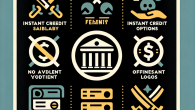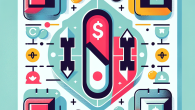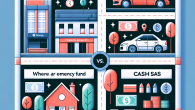
Money Diaries: My Real Monthly Budget Breakdown in Bristol
Why Your Emergency Fund Might Be the Most Romantic Investment You’ll Ever Make
I get it. When you think of romance, the first things that come to mind aren’t usually spreadsheets, budget apps, or stashing away money in a high-yield savings account. But hear me out: building a proper emergency fund is one of the most loving things you can do for your future self—and yes, even your relationship.
Hi, I’m Rachel Simmons—your slightly sassy, definitely practical personal finance bestie. I specialize in helping people like you win financial independence without needing to decode Wall Street or become a coupon-clipping ninja. So grab your favorite mug of coffee (or wine, no judgment), and let’s talk about this thing we call an emergency fund—and why it’s more attractive than you think.
What Is an Emergency Fund, Really?
Let’s clear up any mental images of fire trucks or doomsday kits. An emergency fund is simply a stash of cash you set aside for—wait for it—emergencies. Think job loss, medical bills, unexpected car repairs, or yes, a global pandemic (been there).
It’s that safety net that stops a broken fridge from turning into a financial catastrophe. It gives you breathing room, options, and a whole lot of peace of mind. That, my friend, is sexy security.
So, How Much Should You Save?
If you Google this (please don’t—I’ve done that for you), the general rule of thumb is 3–6 months’ worth of expenses. But here’s the real scoop: your emergency fund should reflect your life. Single with no dependents? Maybe 3 months is cool. Married with 2 kids, a mortgage, and a freelance income? I’d bump that number up to 6 or more.
- Beginner level: $1,000 – Just to get your feet wet and cover basic surprises.
- Growing level: 3 months of necessary expenses (rent, food, utilities, insurance). Focus on needs, not wants.
- Advanced level: 6 months or more – the ultimate cushioning for true peace of mind.
Where Should You Keep Your Emergency Fund?
Let’s be real—keeping it under your mattress is a vibe, but it’s not smart. Your money should be safe, liquid (meaning easily accessible), and ideally earning something. Not in the stock market (too volatile), and definitely not tied up in real estate.
Smart places to park your emergency fund:
- High-yield savings accounts: These are my personal favorite. They’re FDIC-insured and offer higher interest than traditional banks.
- Money market accounts: Still liquid, slightly higher rates, and sometimes check-writing features.
- Cash management accounts: Offered by some brokerages, these hybrid accounts offer easy access and reasonable yields.
Important: Your emergency fund isn’t there to make you rich—it’s there to keep you from going broke.
Why an Emergency Fund is Financially Sexy
Let me paint you a picture. It’s Friday night. You’re binge-watching your favorite guilty pleasure show when your car makes a crunchy noise that sounds way too expensive. Old You panics, pulls out a credit card with a 27% interest rate, and spirals into anxiety. New You? Smirks, calls the mechanic, pays cash from your emergency fund, and goes back to your popcorn. Boss move.
Here’s why this matters:
- Prevents debt: Say goodbye to high-interest loans when life throws a curveball.
- Protects your long-term investments: You won’t have to pull out of your retirement account or 401(k) early (and get penalized).
- Improves your credit score: Without credit-card debt piling up, your credit utilization stays beautiful.
- Reduces relationship stress: Financial tension is one of the top causes of breakups. Kill the drama with a backup plan.
How to Build Your Emergency Fund (Without Selling a Kidney)
I know, I can already hear you: “But Rachel, I can barely make rent right now!” Honey, I hear you. No judgment. Rome wasn’t saved in a day, and neither is your emergency fund. Let’s break it down:
1. Automate It
Set up an automatic transfer from your checking to your savings every payday—even if it’s just $25. What’s out of sight is safely building interest.
2. Cut One “Nice to Have”
Maybe it’s a streaming service you forgot you had. Maybe you switch out one takeout night per month. Redirect that money like the budgeting boss you are.
3. Side Hustle with Purpose
Got a weekend to spare? Drive Uber, sell gently used clothes, freelance, walk dogs—whatever! But funnel all those earnings straight to your emergency account.
4. Temporarily Slash Big Costs
Negotiate your bills, switch insurance providers, or pause on that gym membership you haven’t used since last January. Even small sacrifices pay off big in emergencies.
Common Mistakes to Avoid
Look, even future financial queens can trip up. Let’s make sure you don’t:
- Using it for non-emergencies: New iPhone? Not an emergency. Designer shoes on sale? Definitely not. If it doesn’t disrupt your life, don’t touch the fund.
- Not replenishing: If you dip into it, make it your mission to refill it. Pronto.
- Stashing it all in cash: Inflation is real. You want your money safe, but still working a little bit for you.
Final Thoughts: Build Resilience, Build Freedom
Emergency funds aren’t about fear—they’re about freedom. They give you the ability to say “no” to toxic jobs, walk away from bad situations, and handle life’s curveballs without unraveling.
It’s not flashy. It won’t impress your friends on Instagram. But trust me—it’s the smartest, most empowering move you’ll ever make.
So go forth and build your secret weapon. Celebrate every $100 milestone with a happy dance (I definitely do). You’re not just saving money—you’re investing in peace of mind. And that, my friend, is the heart of financial independence.
Want more honest, actionable tips like this? Check out our About Us to learn what Financeone is all about, or get in touch—I read every message!









Leave a Reply